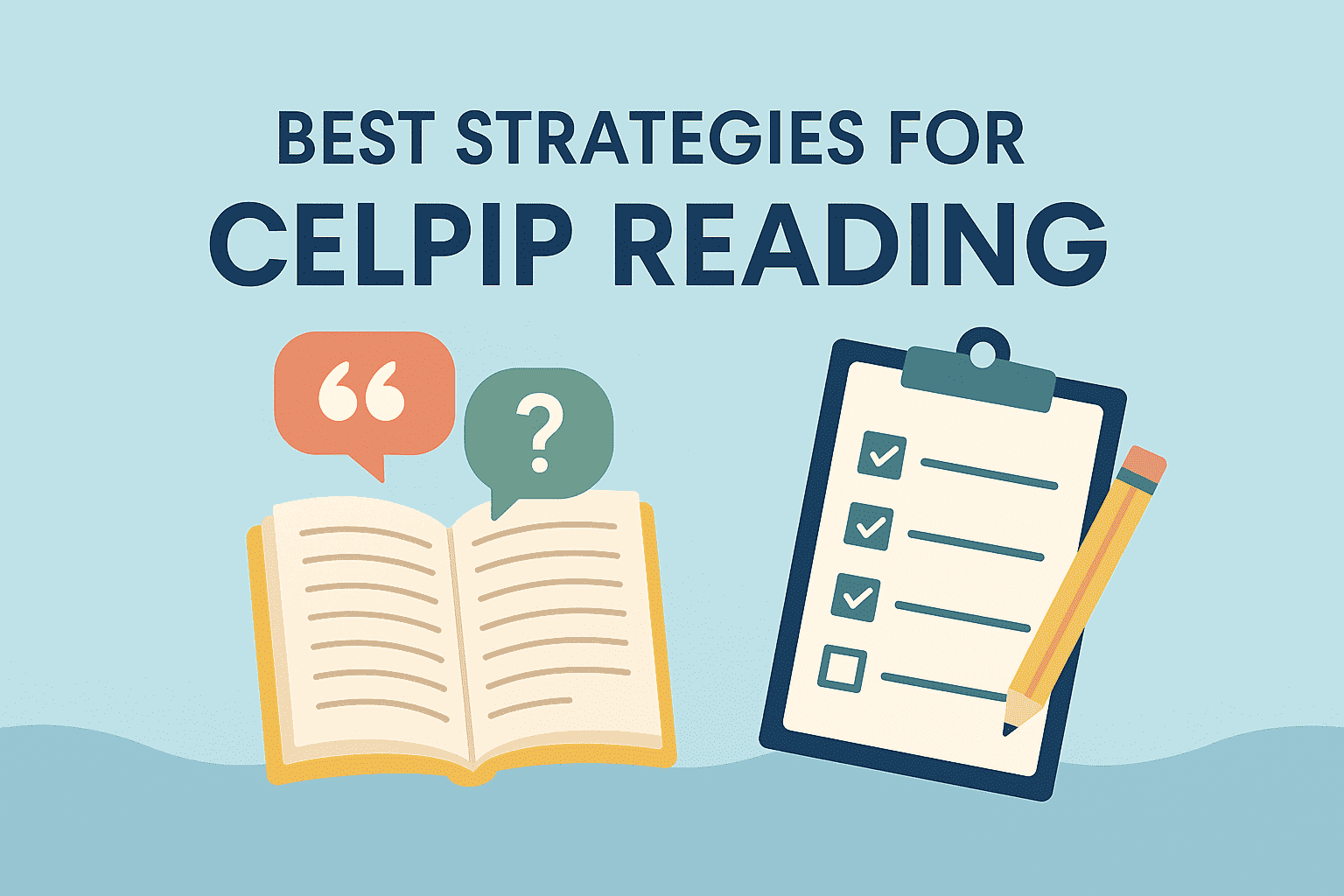Mastering CELPIP Reading Part 4: Proven Strategies!
CELPIP Reading Part 4 asks you to analyze a multi-paragraph text presenting contrasting opinions on the same topic. Here’s what you can do!
1. Skim the Structure First (30 seconds)
-
Preview the title and headings – they reveal the debate theme.
-
Glance at the first and last sentences of each paragraph to map viewpoint shifts quickly.
-
Circle discourse markers (“however,” “on the other hand,” “in contrast”)—they announce opposing opinions
——–Purpose: You’ll know the argument flow before reading in depth, saving precious time later.
2. Tag Every Paragraph With a “Speaker Label”
Create a mental shorthand—e.g., Parent, Teacher, Researcher. After your initial skim, jot a one-word label beside each paragraph on your scrap paper. During detailed reading, you can match questions to the right “speaker” instantly, avoiding rereads. This is key for your memory!
3. Hunt for Attitude Words, Not Just Facts
Part 4 questions often ask whose tone is doubtful, enthusiastic, or neutral. Train yourself to underline adjectives and adverbs that reveal attitude. Here are some examples:
| Positive | Negative | Neutral/Reserved |
|---|---|---|
| innovative, promising, prudent | short-sighted, risky, inadequate | suggests, notes, indicates |
Similarly, when you see “Some critics argue the plan is short-sighted,” instantly classify that stance as negative.
4. Use the “Pivot Word” Rule for Inference Items
If a question asks what a writer would most likely agree with, locate pivot words—because, therefore, overall, ultimately. The clause after a pivot often contains the writer’s real conclusion. Base your inference on that line, not on earlier examples that may show someone else’s view.
5. Eliminate First—Confirm Second on Multiple Choice
Each question provides four options. Discard obvious mismatches (wrong viewpoint, wrong detail, opposite attitude) before weighing subtle differences. This is how it helps you:
-
Crosses out two clear misfits.
-
You only re-read the remaining lines in the text to choose between the last two.
6. Mind the Time: 10 minutes Maximum
Part 4 is the lengthiest (and the most advanced) reading passage in the test. Aim for:
-
Skim & label: 1 minute
-
Answer 10 questions: ~45 seconds each
-
Buffer: 1–2 minutes for tricky ones
Practice under timed conditions so you feel the pace instinctively on exam day.
7. Build “Viewpoint Vocabulary” Before Test Day
Enhance your reading radar with words that signal agreement, disagreement, or uncertainty:
-
Agreement: endorse, concur, advocate
-
Disagreement: refute, contest, dismiss
-
Uncertainty: speculate, imply, suggest
Knowing these terms lets you identify stance instantly, even in unfamiliar topics. It’s similar to point #3 but needs to be reiterated to make sure you understand the requirements of paraphrasing.
8. Train With Authentic, Varied Texts
Daily, spend 15 minutes on editorials or opinion columns. After reading, answer:
-
What is the author’s main claim?
-
Which evidence supports it?
-
How strong is the language (confident vs. tentative)?
This mirrors CELPIP Part 4 thought-work and builds speed.
The more questions you ask yourself, the better it will be for your understanding!
9. Simulate Exam Conditions With High-quality Mock Tests
Practice is most effective when feedback is immediate. Use mock tests that replicate CELPIP formatting and scoring to diagnose weaknesses in inference, tone, or detail questions—then drill those areas. Find them here: https://hzadeducation.com/product/classes-celpip/
10. Review, Don’t Re-read
If time remains, check that each answer aligns with the correct paragraph label and attitude. Resist the urge to reread the whole text; targeted verification prevents last-minute second-guessing.
Example Walk-through
Paragraph Sample:
—–Environmental economist Dr. Vyas believes carbon taxes are “the only realistic path” to curb emissions, arguing that market incentives outperform regulations.
Question
Which statement best reflects Dr. Vyas’s viewpoint?
Process
-
Label paragraph: Economist—strongly pro-tax
-
Spot attitude word: “only realistic path” → high confidence
-
Option containing “most effective solution” = correct. Eliminate options describing taxes as “one option among many” (weak confidence) or praising regulations (opposite stance).
Time taken: 25 seconds.
Important Takeaways
-
Map the debate quickly; label every voice.
-
Focus on attitude markers—they unlock tone and inference items.
-
Practice under the clock to cement a 10-minute rhythm.
-
Use targeted mock tests for actionable feedback.
Apply these tactics consistently and you’ll transform Part 4 from a hurdle into a high-score opportunity.
BEST FREE CELPIP Videos and Advice: https://www.youtube.com/@hzadeducation-coachingcent986
Next Step: Get Guaranteed Improvement
For comprehensive training—including five full mock tests with teacher & AI feedback, detailed reading modules, and personalized strategies—join our 15-hour self-paced CELPIP course.
Access here: https://hzadeducation.com/product/classes-celpip/
Discount code: CEL9 (20 % off for the next 24 hours)
See you inside, and let’s secure that CLB 10+!


